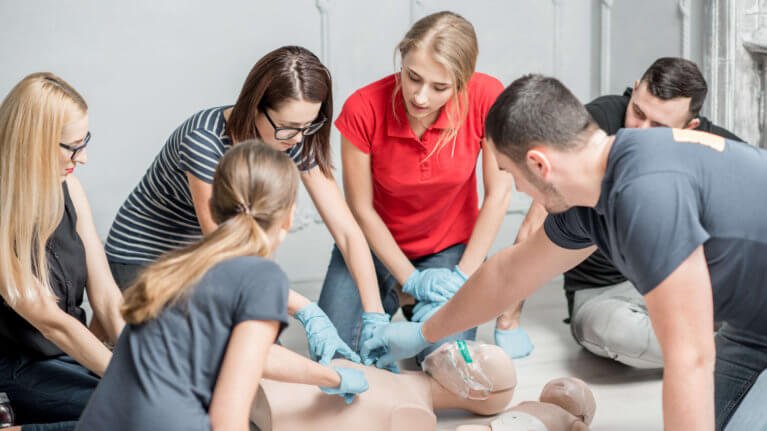Understanding CPR Certification
Cardiopulmonary Resuscitation (CPR) is a life-saving technique crucial in emergency situations, such as cardiac arrest, drowning, or choking. Proper training in CPR can mean the difference between life and death. This article provides an overview of CPR certification, its importance, the process involved, and the benefits of becoming certified.
Importance of CPR Certification
Saving Lives
The primary importance of CPR certification lies in its potential to save lives. Immediate CPR can double or even triple a cardiac arrest victim’s chance of survival. Certified individuals are equipped with the skills and confidence to act swiftly and effectively during emergencies, increasing the likelihood of a positive outcome.
Workplace Requirements
Many workplaces, especially those in healthcare, education, and public safety, require employees to be CPR certified. Having certified staff ensures a safer environment and compliance with health and safety regulations.
Personal Empowerment
CPR certification empowers individuals to respond to emergencies involving family members, friends, or strangers. The knowledge and skills gained provide peace of mind, knowing one can help in critical situations.
CPR Certification Process
Choosing a Certification Program
Various organizations offer CPR certification, including the American Heart Association (AHA), the American Red Cross, and the National Safety Council. It’s important to choose a program that is widely recognized and meets your specific needs, whether it’s for professional or personal purposes.
Course Content
CPR certification courses typically cover:
Basic Life Support (BLS): Techniques for adults, children, and infants, including chest compressions, rescue breaths, and using an automated external defibrillator (AED).
Advanced Cardiac Life Support (ACLS): More advanced techniques for healthcare professionals, focusing on managing cardiac arrest and other cardiovascular emergencies.
First Aid Training: Basic first aid skills, such as treating wounds, burns, and fractures, often included in CPR courses.
Training Methods
Certification courses can be taken in person, online, or through a blended approach combining both. In-person training involves hands-on practice with mannequins, providing real-time feedback from instructors. Online courses offer flexibility and convenience, while blended courses combine the benefits of both methods.
Certification Examination
Upon completing the course, participants must pass a written exam and a practical skills test to demonstrate their proficiency. The certification is valid for a specified period, typically two years, after which recertification is required to maintain skills and knowledge.
Benefits of CPR Certification
Increased Confidence
CPR certification builds confidence in handling medical emergencies. Certified individuals are more likely to intervene and provide assistance effectively, reducing panic and hesitation during critical moments.
Improved Safety
Certified individuals contribute to a safer environment at home, work, and in the community. Their presence ensures that there is always someone capable of providing immediate assistance in case of an emergency.
Professional Advantages
For healthcare providers, educators, lifeguards, and other professionals, CPR certification is often a job requirement. It enhances employability, professional credibility, and may open doors to additional career opportunities.
Community Impact
Widespread CPR certification can significantly impact community health and safety. Trained individuals in public spaces can provide timely assistance, improving overall survival rates from cardiac emergencies.
Maintaining CPR Certification
Recertification
CPR skills can degrade over time, making recertification essential. Most organizations require recertification every two years to ensure individuals remain competent in their skills. Recertification courses are often shorter and focus on refreshing knowledge and practicing techniques.
Continuing Education
Staying updated with the latest guidelines and techniques is crucial. Many organizations offer continuing education opportunities and advanced training to help certified individuals keep their skills current and expand their knowledge.
Conclusion
CPR certification is a vital skill that can save lives and provide numerous personal and professional benefits. Whether required for a job or pursued for personal empowerment, the knowledge gained through CPR certification ensures individuals are prepared to act effectively in emergencies. Choosing a reputable certification program, understanding the course content, and committing to ongoing education and recertification are key steps in becoming and remaining a proficient responder. By investing in CPR certification, individuals contribute to a safer and more prepared community.














Post Comment